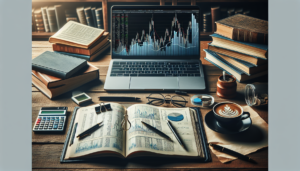Introduction to Copper Investment
Copper is a versatile metal with a wide range of applications, from construction and electronics to renewable energy and electric vehicles. As a result, copper has become an increasingly popular investment commodity in recent years. This comprehensive guide will explore the fundamentals of copper investment, providing beginners with the knowledge and strategies needed to make informed decisions.
Why Invest in Copper?
Investing in copper offers several potential benefits. Firstly, copper is a key component in many industries, making it a valuable commodity with consistent demand. As global infrastructure projects and technological advancements continue to grow, the demand for copper is expected to remain strong. Additionally, copper serves as an inflation hedge, historically showing a positive correlation with inflation rates.
Copper’s versatility and widespread use make it an attractive investment option for those seeking to diversify their portfolios. By including copper in your investment strategy, you can potentially mitigate risks associated with market volatility and economic downturns.
Understanding Copper as a Commodity
To effectively invest in copper, it is essential to understand its dynamics as a commodity. Copper prices are influenced by various factors, including supply and demand, production costs, and geopolitical events.
The global copper market is highly interconnected, with prices determined by international trade and economic conditions. Investors should stay informed about copper market trends, such as production levels, inventory levels, and consumption patterns, to make well-informed investment decisions.
Methods of Investing in Copper
There are several ways to invest in copper, each with its own advantages and considerations. Here are the primary methods:
Physical Copper Investment
Investing in physical copper involves purchasing copper in the form of bars, rounds, or coins. This method allows investors to have direct ownership of the metal, providing a tangible asset that can be stored and sold as needed. However, physical copper investment also comes with storage and insurance costs, as well as potential liquidity issues when trying to sell larger quantities.
Investing in Copper ETFs
Copper Exchange-Traded Funds (ETFs) offer a convenient way to gain exposure to copper prices without the need for physical ownership. These funds track the performance of copper futures contracts or a basket of copper-related assets, such as mining stocks. Copper ETFs provide liquidity, diversification, and lower transaction costs compared to physical copper investment.
There are several types of copper ETFs available, including physically-backed, equity-based, and futures-based funds. Investors should carefully evaluate the fund’s structure, holdings, and expenses before investing.
Copper Mining Stocks
Another way to invest in copper is through the stocks of companies involved in copper mining, production, and exploration. By investing in copper mining stocks, investors can benefit from the growth and profitability of these companies, as well as potential dividends. However, investing in individual stocks carries company-specific risks, such as management issues, production challenges, and geopolitical risks in the countries where the mines are located.
Copper Futures Contracts
Copper futures contracts are agreements to buy or sell a specified amount of copper at a predetermined price and date in the future. Futures contracts are often used by investors to speculate on copper price movements or to hedge against price fluctuations. However, futures trading involves a high level of risk and is not suitable for all investors. It requires a thorough understanding of the copper market and the ability to manage leverage and margin requirements.
Factors Influencing Copper Prices
To make informed investment decisions, it is crucial to understand the key factors that influence copper prices. Some of these factors include:
Market Demand and Supply
The balance between copper supply and demand is a primary driver of copper prices. When demand outpaces supply, prices tend to rise, while an oversupply can lead to price declines. Demand for copper is driven by various industries, such as construction, electronics, and automotive manufacturing. On the supply side, factors such as mine production, scrap availability, and inventory levels can impact prices.
| Demand Drivers | Supply Factors |
|---|---|
| Construction activity | Mine production |
| Electrical and electronics industry | Scrap availability |
| Renewable energy projects | Inventory levels |
| Electric vehicle production | Production disruptions |
Geopolitical Factors
Geopolitical events can significantly impact copper prices, as they can disrupt supply chains, affect trade relationships, and create market uncertainty. For example, political instability, trade disputes, or changes in mining regulations in major copper-producing countries can influence global copper prices.
Investors should monitor geopolitical developments in key copper-producing regions, such as Chile, Peru, and China, to assess potential risks and opportunities.
Technological Advancements
Technological advancements can impact copper demand and prices in various ways. The development of new applications for copper, such as in renewable energy systems or electric vehicles, can drive increased demand. On the other hand, advancements in copper recycling or the development of copper alternatives can potentially reduce demand and affect prices.
Staying informed about technological trends and their potential impact on the copper market is essential for making well-informed investment decisions.
Risks and Considerations in Copper Investment
While copper investment offers potential benefits, it also comes with certain risks and considerations that investors should be aware of:
Market Volatility
Copper prices can be volatile, subject to rapid fluctuations based on changes in supply and demand, economic conditions, and market sentiment. Investors should be prepared for potential price swings and have a well-defined risk management strategy in place.
Economic Downturns
During economic downturns or recessions, demand for copper may decline as construction and manufacturing activities slow down. This can lead to lower copper prices and potential losses for investors. It is important to consider the overall economic climate and adjust investment strategies accordingly.
Geopolitical Risks
As mentioned earlier, geopolitical events can significantly impact copper prices. Political instability, changes in government policies, or trade disputes in major copper-producing countries can disrupt supply and create market uncertainty. Investors should monitor geopolitical risks and diversify their portfolios to mitigate potential impacts.
Strategies for Investing in Copper
When investing in copper, consider the following strategies to maximize potential returns and manage risks:
Long-term vs. Short-term Investment
Copper investment can be approached with a long-term or short-term perspective. Long-term investors may focus on the fundamental drivers of copper demand, such as global economic growth and infrastructure development. They may hold copper investments for several years, riding out short-term price fluctuations.
Short-term investors, on the other hand, may aim to capitalize on short-term price movements and market trends. They may engage in more active trading strategies, such as using technical analysis or trading copper futures contracts.
Diversification with Copper
Incorporating copper into a diversified investment portfolio can help mitigate risks and enhance overall returns. Copper can act as a hedge against inflation and provide exposure to global economic growth. Consider allocating a portion of your portfolio to copper investments, alongside other asset classes such as stocks, bonds, and real estate.
Sustainable Copper Investment
With growing concerns about environmental sustainability and responsible investing, consider focusing on copper investments that align with these values. Look for copper mining companies with strong environmental, social, and governance (ESG) practices, or invest in copper ETFs that focus on sustainable mining practices.
Top Copper ETFs and How to Choose Them
Copper ETFs provide a convenient way to gain exposure to copper prices without directly owning the physical metal. Here are some popular copper ETFs to consider:
Popular Copper ETFs
- United States Copper Index Fund (CPER)
- iShares Copper and Metals Mining ETF (ICOP)
- Global X Copper Miners ETF (COPX)
- Invesco DB Base Metals Fund (DBB)
- Horizons Copper Futures ETF (HCU.TO)
Factors to Consider When Choosing Copper ETFs
When selecting a copper ETF, consider the following factors:
- Expense ratio: Look for ETFs with lower expense ratios to minimize the impact of fees on your returns.
- Tracking method: Some ETFs track copper prices directly, while others invest in copper mining stocks. Understand the ETF’s tracking method and how it aligns with your investment goals.
- Liquidity: Choose ETFs with high trading volumes to ensure easy buying and selling.
- Performance: Evaluate the ETF’s historical performance and compare it to benchmark indexes and peer funds.
- Fund size: Larger funds tend to have better liquidity and lower expense ratios.
Conclusion
Summary of Key Points
Investing in copper can be a valuable addition to a diversified investment portfolio. Copper’s widespread use, global demand, and potential as an inflation hedge make it an attractive commodity for investors. By understanding the different investment methods, factors influencing copper prices, and risk considerations, beginners can make informed decisions and develop effective copper investment strategies.
Final Thoughts
As with any investment, it is essential to conduct thorough research, assess your risk tolerance, and seek professional advice when necessary. Stay informed about copper market trends, global economic conditions, and geopolitical developments to make well-informed investment decisions. By incorporating copper into a well-diversified portfolio and employing sound investment strategies, investors can potentially benefit from the long-term growth and value of this versatile metal.
See also:






